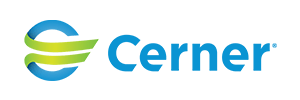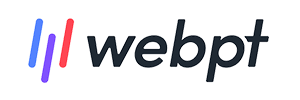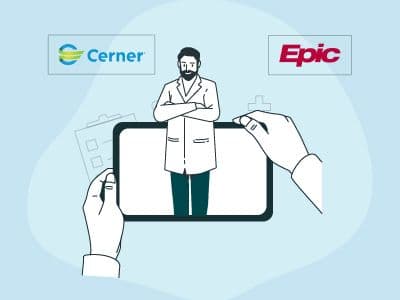ChartLogic offers robust features like seamless EHR integration, intuitive scheduling, and advanced billing capabilities. Its strengths include customizable templates, voice dictation, and comprehensive reporting tools for enhanced practice management. Top competitors include Epic, eClinicalWorks, Cerner, athenahealth, Tebra, etc which also provide strong EHR, billing, and scheduling solutions.
The Best ChartLogic Alternatives
Select up to 2 products
Compare Features
Feature List |  ChartLogic | Praxis EMR | PrognoCIS |  eClinicalWorks |  Cerner EMR |
|---|---|---|---|---|---|
Appointment Management/Scheduling | |||||
e-Prescriptions | |||||
Lab Integration | |||||
Patient Portal | |||||
Mobile App | |||||
Telemedicine | |||||
Billing and Invoicing | |||||
Claims Management | |||||
Customizable Forms | |||||
Patient Demographics |
Make decisions with real reviews from real users
Top 10 Chartlogic Alternatives
As the healthcare industry continues to evolve, so do the expectations around electronic medical records (EMR) systems. With growing practices and rising patient demands, providers are increasingly looking for EMR solutions that are not only flexible and scalable but also tailored to their specialty needs.
ChartLogic has been a trusted name, offering integrated EMR, practice management, and revenue cycle solutions. Its voice-powered charting, electronic prescribing, and customizable templates have helped streamline workflows for many providers.
However, with rapid advancements in healthcare IT, some users feel that ChartLogic’s interface is outdated, customization options are limited, and specialty-specific support is lacking. Feedback from real-time users highlights a desire for EMR systems with more modern designs, stronger reporting capabilities, and seamless integrations—especially for niche specialties or larger practices.
Looking into ChartLogic alternatives can help you discover EMR solutions better aligned with your clinical workflows, operational goals, and patient care priorities. This guide aims to provide you with the details of the best alternatives to Chartlogic. Having the right EMR software will support your practice's next chapter.
Our Best Chartlogic Alternative Picks For You
Software Name | Unique Advantage | Notable Features |
eClinicalWorks |
|
|
Epic EMR |
|
|
Tebra |
|
|
Cerner EMR |
|
|
Praxis EMR |
|
|
PrognoCIS |
|
|
WebPT |
|
|
NueMD |
|
|
PracticeSuite |
|
|
Nexus EHR |
|
|
1. eClinicalWorks
eClinicalWorks is a popular cloud-based electronic health record (EHR) solution trusted by a wide range of physicians worldwide. It is built to improve clinical workflows and support high-quality patient care, making it easier for healthcare providers to securely share patient data across different systems. Moreover, it offers a virtual assistant that helps users quickly access key information. It is best known for specialties such as internal medicine, cardiology, urgent care, and others.
While ChartLogic may have limitations when it comes to data sharing, eClinicalWorks sets itself apart with exceptional interoperability features. It enables seamless connections with hospitals, imaging centers, and labs. This makes it a great choice for practices that rely on smooth referral management, streamlined data exchange, and consistent care coordination across providers.
The key features of eClinicalWorks are:
- Eva (Virtual Assistant)
- Check-In Abilities
- Care Planning
- KPI Monitorin
What Are The Pros And Cons Of eClinicalWorks?
Pros | Cons |
|
|
How Much Does eClinicalWorks Cost?
The vendor offers the following pricing plans:
- EHR Only: $449/month/provider
- EHR With Practice Management: $599/month/provider
- RCM As A Service: 2.9% of practice collections
Disclaimer: The pricing is subject to change.
2. Epic EMR
Epic EMR is one of the leading tools in the healthcare software space, widely used by large hospital networks and academic medical centers. It is renowned for its powerful, customizable modules and advanced features like predictive analytics and support for personalized medicine. Also, it helps to boost patient engagement and overall satisfaction. Medical specialties, such as urology, oncology, and others, utilize it for their practice management tasks.
ChartLogic is designed to serve smaller practices. In contrast, Epic EMR caters to large healthcare organizations with its enterprise-level capabilities. It seamlessly connects departments and care settings, offering advanced tools like real-time population health analytics.
The following are its essential features:
- Remote Patient Monitoring
- Appointment Scheduling
- AI Assistant
- Electronic Referrals
What Are The Pros And Cons Of Epis EMR?
Pros | Cons |
|
|
How Much Does Epic EMR Cost?
It offers tailored pricing plans that are based on the specific requirements of the medical facility.
3. Tebra (Formerly Kareo + PatientPop)
Tebra is an innovative cloud-based platform that emerged from the merger of Kareo, a practice management and billing tool, and PatientPop, a growth platform. This powerful combination offers a comprehensive suite of tools for independent healthcare practices, seamlessly blending revenue management, patient engagement, and online presence into one cohesive system. It is considered right to support practice growth while reducing the administrative workload for providers. The range of specialties it caters to includes primary practice, pediatrics centers, mental health clinics, and others.
ChartLogic lacks built-in digital marketing and online reputation management features. On the other hand, Tebra shines in this area by combining growth-focused solutions with essential operational tools. The features like patient acquisition management, automated online scheduling, and real-time feedback collection make it stand out in helping practices build trust and boost patient engagement.
Some of its notable features include:
- Electronic Labs
- Telehealth Tools
- Online Scheduling Options
- Practice Management
What Are The Pros And Cons Of Tebra?
Pros | Cons |
|
|
How Much Does Tebra Cost?
The vendor offers flexible pricing options that are based on your practice’s unique needs and requirements.
4. Cerner EMR
Cerner (now Oracle Health) is a widely trusted EMR platform favored by hospitals, large practices, and health systems around the world. It excels in offering integrated solutions that cover clinical, financial, and operational workflows. With advanced data analytics and customizable modules, it is particularly well-suited for focusing on value-based care and managing population health.
While ChartLogic is tailored for smaller ambulatory practices, Cerner stands out with its predictive analytics and enterprise-level interoperability. Its "HealtheIntent" platform delivers real-time insights into community health trends, a feature that ChartLogic doesn’t offer.
The key features are:
- Revenue Cycle Management
- Analytics And Reporting
- Population Health Management
- Internal Coordination Tools
What Are The Pros And Cons Of Cerner EMR?
Pros | Cons |
|
|
How Much Does Cerner EMR Cost?
The vendor offers a variable pricing model as per the system units required.
5. Praxis EMR
Praxis EMR is a distinguished EMR system that excels with its intuitive design. Unlike traditional EMRs that require providers to rely on prebuilt templates, it learns from a physician's individual style and adapts over time. It not only makes charting faster but creates a more personalized experience for the users. It is mainly built for physicians who value independence and offers specialties such as internal medicine, functional medicine, and others.
While ChartLogic offers extensive customizable templates, Praxis takes a unique approach with its AI-driven concept processing engine, which adapts to every patient interaction. This dynamic system enables faster, more accurate documentation, saving physicians hours of administrative work each week.
Important features of Praxis EMR are:
- Integrated Patient Portal
- AI-Based Messaging
- Reporting Tools
- Smart Concept Processor
What Are The Pros And Cons Of Praxis EMR?
Pros | Cons |
|
|
How Much Does Praxis EMR Cost?
The vendor offers an ownership pricing model starting from $219 per month per provider that is applicable for the first provider for 60 months.
6. PrognoCIS
PrognoCIS is a versatile EHR tool platform designed for effective practice management. The simple interface and specialty-specific templates simplify workflows. Moreover, robust patient engagement tools like secure messaging and e-prescriptions aid in improving the patient experience. It is mostly utilized by practices that offer pain management, podiatry, psychiatry, and other specialties.
Compared to ChartLogic’s emphasis on voice dictation and core EHR functionalities, PrognoCIS provides a more flexible solution. It comes with built-in telemedicine, reporting, and customizable templates for a wide variety of specialties. Hence, making it ideal for modern healthcare needs.
The key features are:
- Claims Management
- Automated Reminders
- Advanced Documentation
- HIPPA Compliant
What Are The Pros And Cons Of PrognoCIS?
Pros | Cons |
|
|
How Much Does PrognoCIS Cost?
It offers module-based pricing plans for an extensive range of specialties with distinguished requirements.
7. WebPT
WebPT is a cloud-based EMR designed specifically for physical therapy and rehab practices. Trusted by a large user base of 170,000 plus clinicians, it offers specialized features like SOAP note documentation, streamlined scheduling, billing, outcomes tracking, and compliance reporting. Furthermore, it also includes a robust patient engagement suite to boost retention and encourage therapy adherence. It is best suited for outpatient rehab centers that are looking forward to installing a niche-specific solution.
ChartLogic possesses general EHR capabilities; however, it does not offer the rehab-specific features many therapy practices need. WebPT, on the other hand, is built in accordance with physical therapists' needs. These specialty-focused features make it a top choice for rehab and physical therapy providers.
Some of its key features are:
- Lead Management Tools
- Reputation Management
- Analytical Insights
- Billing Tools
What Are The Pros And Cons Of WebPT?
Pros | Cons |
|
|
How Much Does WebPT Cost?
It offers the following pricing options at customized rates as per practice size:
- Starter: Custom pricing (Ideal for startups and smaller practices)
- Enhanced: Custom pricing (Ideal for growing practices)
- Ultimate: Custom pricing (Ideal for larger practices)
8. NueMD
NueMD is a cloud-based practice management solution designed to simplify medical billing and healthcare facility operations. Known for its user-friendly interface, it is often considered a great fit for small practices looking to streamline tasks like billing, claims processing, and patient scheduling. It also supports a wide variety of specialties such as general practice, behavioral health, and others.
Compared to ChartLogic’s focus on advanced EHR capabilities, NueMD outshines the industry for its streamlined billing workflows and built-in claim scrubbing tools. These features help speed up claims submission and improve reimbursement times, making it a smart choice for practices facing revenue cycle challenges.
The key features of NueMD include:
- Lab Integrations
- Coding Tools
- Mobile Accessibility
- Patient Demographics
What Are The Pros And Cons Of NueMD?
Pros | Cons |
|
|
How Much Does NueMD Cost?
The vendor provides custom pricing as per practice requirements.
9. PracticeSuite
PracticeSuite is a comprehensive cloud-based platform that brings together multiple EHR functionalities, such as practice management, telemedicine, and revenue cycle tools, in one solution. It offers robust features, like denial management, billing analytics, and multi-location support, making it a versatile choice for growing healthcare practices. Many multi-specialty practices, community health centers, and billing companies utilize it to streamline their processes.
While ChartLogic excels in charting and voice dictation, PracticeSuite shines with its advanced billing analytics, multi-location support, and integrated denial management tools. It is one of the best fits for billing teams and multi-provider practices that prioritize financial performance and operational efficiency.
The notable features are:
- Automated Eligibility Checks
- Payment Processing
- Flexible Charting
- E-Prescribing
What Are The Pros And Cons Of PracticeSuite?
Pros | Cons |
|
|
How Much Does Cost PracticeSuite?
The vendor provides flexible pricing plans based on the type of solution required.
10. Nexus EHR
Nexus EHR is a modern EHR platform designed to enhance mobility and improve the user experience. It is tailored for small to medium-sized practices, offering features like e-prescriptions, clinical decision support, patient portals, and reporting. Also, it is fully HIPAA-compliant, which ensures both security and functionality. Nexus EHR caters to multiple specialties, for example neurology, general surgery, orthopedics, and others.
Nexus EHR offers a more modern design and user-friendly experience compared to ChartLogic. The quicker implementation and integrated dashboards for value-based care provide solutions that ChartLogic often requires third-party tools to achieve.
The following are its key features:
- Voice-To-Text Transcription
- Appointment Tracking
- Post-Visit Surveys
- Patient Engagement
What Are The Pros And Cons Of Nexus EHR?
Pros | Cons |
|
|
How Much Does Nexus EHR Cost?
The vendor offers value-based pricing plans at personalized rates.
How We Choose Our Chartlogic Alternatives?
Selecting the right EMR/EHR solution isn’t a one-size-fits-all choice. Here are the criteria we followed to craft the top Chartlogic alternatives list:
- Addressing User Pain Points: We picked the tools that offer better billing solutions, specialized tools, or a more user-friendly interface
- Integration Capabilities: Our selections include platforms that are known to easily integrate with labs, billing systems, telehealth, and patient portals
- User Reviews: We analyzed and read real user experiences and insights into each tool’s features, advantages, and potential drawbacks
- Industry Relevance: We included solutions that cater to an extensive range of practices and specialties
Selecting The Right Chartlogic Alternative
ChartLogic is a reliable EMR, but it may not be the ideal solution for every practice. Whether you're looking for specialized features, streamlined billing, or a more modern user interface, there are plenty of alternatives to consider—ranging from enterprise-grade options to smaller practice-friendly platforms.
Before making the switch, take the time to assess your clinical and financial needs, read user reviews, and schedule a few demos. The right EMR can boost efficiency, improve patient care, and simplify compliance, all while fitting seamlessly into your unique workflow.
Prepared to enhance your EHR experience? Compare the top-rated platforms and contact us today to request a free demo to discover the perfect solution for your practice.








